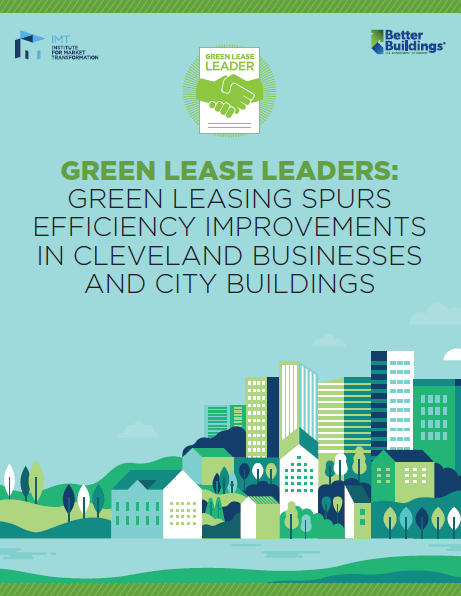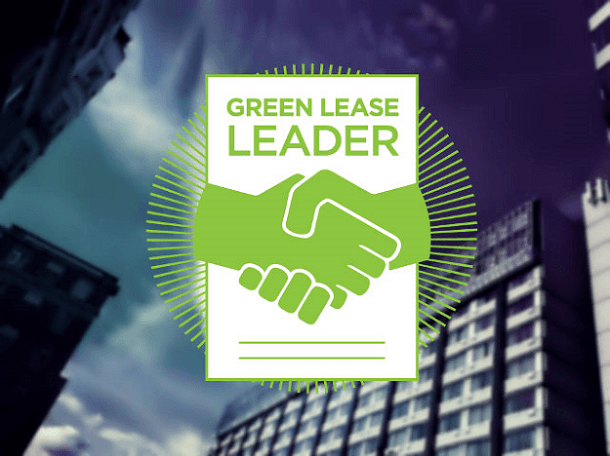This year, Cleveland continued to build strong climate action momentum by becoming the first city to earn the Green Lease Leader designation. The city’s Chief of Sustainability Matt Gray recognized that green leases are an essential tool to include in Cleveland’s city-wide climate action plans and meet its ambitious greenhouse gas emissions reductions goals.

“Cleveland has big goals like a lot of cities, including 80% reduction of emissions by 2050 and 40% by 2030. What it really is, is the transformation of the entire economy,” said Gray. “We need every building, every person, and every organization doing something to get to that reduction goal. This is why green leases are critical to our success and in meeting the goals of our action plans to achieve a Sustainable Cleveland.”
A simple but effective step Cleveland took was to add a green lease section to its Sustainable Municipal Building Policy. As part of this policy, when entering into or renegotiating leases for occupying a building, the city indicates a preference for office space that is certified by ENERGY STAR, LEED, or an equivalent green building standard.

One key organization that engaged in the stakeholder development of Cleveland’s Climate Action Plan was the Greater Cleveland Partnership’s Council of Smaller Enterprises (GCP/COSE), the small business arm of Northeast Ohio’s chamber of commerce and IMT’s partner for the Small Business Energy Initiative. COSE’s Energy Team, led by Nicole Stika, has been demonstrating the value of green leases to the Northeast Ohio business community together with IMT since 2014.
When COSE and IMT first connected, Stika discovered standard lease agreements were creating a road block for converting energy audits for local small businesses into action, as many of the businesses were tenants in someone else’s building. Traditional leases are typically structured in a way that benefits only one party for making energy efficiency and sustainability upgrades. For example, a commercial landlord is unlikely to invest in a new HVAC unit and add more insulation if the tenant is directly billed by the utility for the energy it uses, as the tenant would recoup all of the energy cost savings from the investment. However, there are small modifications that can be made to any lease to completely transform this dynamic and ensure these types of building performance upgrades have win-win business, health, and environmental outcomes.
“Internally and in the community, there is a perception that the split incentive problem is difficult or even impossible to overcome,” said Gray. “Support from IMT and GCP/COSE has been incredibly valuable because it takes upfront education to make the solution happen.”
In addition to working with the city to drive green lease adoption, GCP/COSE has collaborated with IMT to bring green leasing to its member businesses such as the small real estate investment firm MAN Holdings, LLC. To maximize energy savings in its tenant-occupied spaces, MAN Holdings, through its subsidiary Yosemite Properties, tailored model green lease clauses provided by IMT to set clear expectations about tenants’ energy and water use, periods for office air conditioning, and lighting.
“When we tour potential tenants through the available space, one of the things that we highlight is our commitment to sustainable energy as exemplified via our capital investments and our green lease, representing a mutual commitment to green practices,” said Amanda Mayan, MAN Holdings CEO. “There are many reasons that it makes sense, both for attracting tenants and from a business standpoint.”
Want to learn more about how Cleveland’s public and private sectors are pushing the envelope on energy efficiency in leased properties?
- Download our new case study, Green Lease Leaders: Spurring Efficiency in Cleveland Businesses and City Buildings
- Looking for more green leasing resources and sample language to include in a lease? Visit the Green Lease Library and greenleaseleaders.com/resources.


